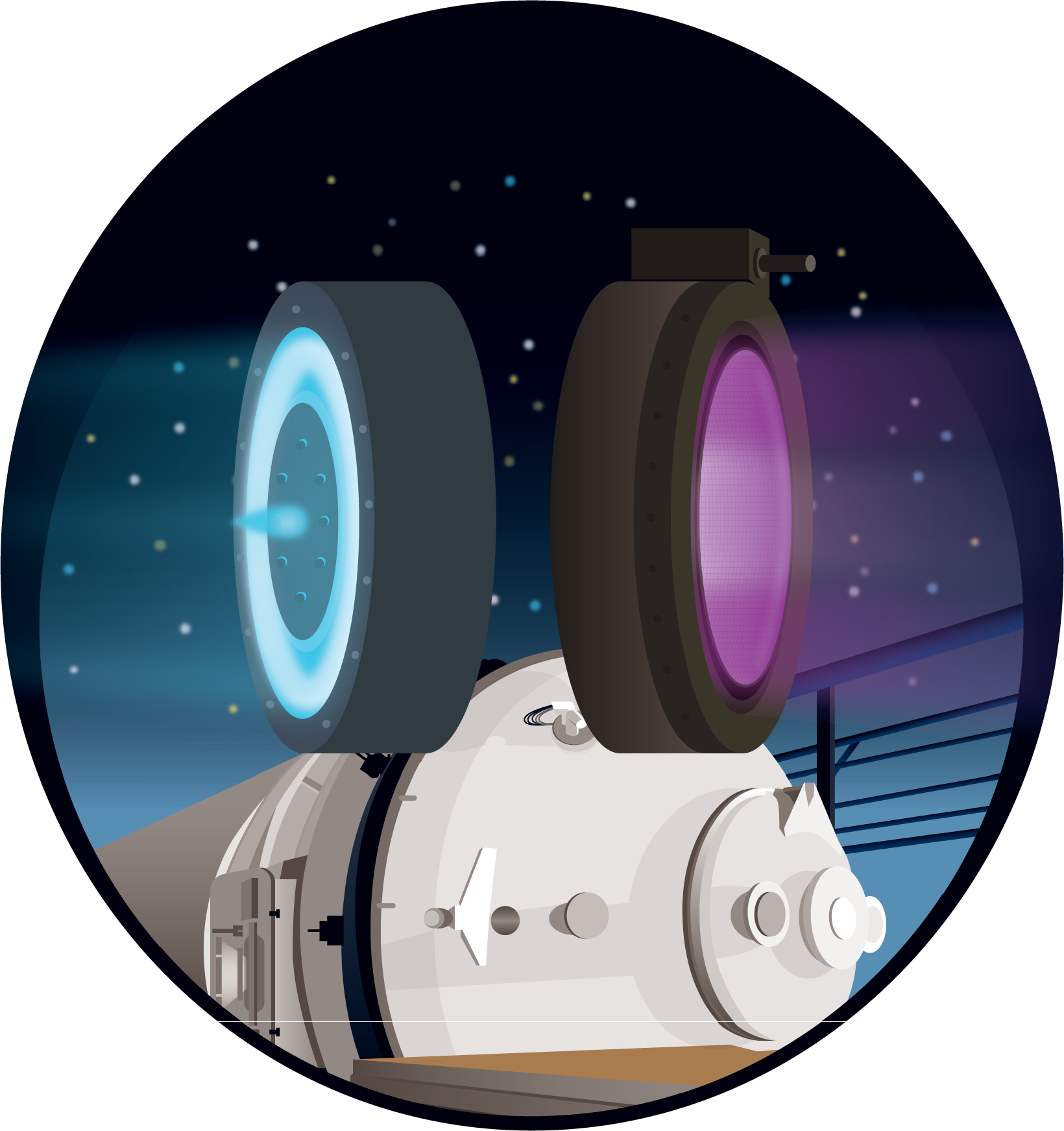JANUS will address the challenge of predicting the performance and life of high-power EP devices in space through a fully integrated research program with three interdependent, multidisciplinary, research pillars:
- Facility Effects
- Diagnostics and Fundamental Studies
- Physics-based Modeling and Integration
The extension of the modeling methods, mitigation techniques, and standards to high-power testing will require the combined efforts of all three pillars. The projects will focus on HETs and GITs operating on xenon and krypton gases. The methodologies and models will be extensible to other EP devices, including magnetoplasma dynamic thrusters (MPDTs) and field-reversed configurations (FRCs). The approach will be progressive.
The work and interactions within the structure of JANUS will ensure a highly-interdependent, multidisciplinary approach to all portions of the research plan to develop unified experimental approaches and complementary models for accurate prediction of thruster performance and lifetime.
The goals of the research pillars are well-aligned to the expertise of the JANUS team; JANUS is comprised of the world’s academic leaders in EP facility effects. Several of the Co-Is have provided foundational work on the role of facility pressure, contamination, and electrical coupling in EP. Many of the participants have current and prior work funded by the government and industry in related SOA activities. The investments will be leveraged within the research pillars.
Institute Research Pillars
Facility Effects:
Overview: This pillar addresses pressure and electrical facility effects. The goals of pressure effects related investigation are to:
- Perform experiments on thrusters in a SOA vacuum facility to generate data for model validation
- Demonstrate new strategies and methodologies for translating high-power (>15 kW) ground-test data to in-space operation.
Key measurements will include performance, high-speed fluctuations in internal and near-field plasma, and neutral flow properties. This effort will leverage the UM Large Vacuum Test Facility (LVTF), its suite of diagnostics and thrusters, and a set of new diagnostic capabilities.
The focus of the electrical effects work is to perform experiments on facility design and EP electrical coupling in a SOA vacuum facility at moderate powers (<15 kW). The results will serve as a source of data for model validation of facility effects. The effort will include power processing, facility modification schemes, new diagnostic development, and evaluation of facility performance extensions by throttling pumping speed with low-power EP. This effort leverages the low operating cost and high pumping speed of Georgia Tech (GT) Vacuum Test Facility 2 (VTF-2).
Diagnostics and Fundamental Studies:
Overview: The focus of this pillar is to elucidate unexplored aspects of thruster-facility interactions. The effort will:
- Develop and employ new diagnostics with well-characterized uncertainty in high-power thruster test
- Conduct fundamental plasma-material interaction studies on surfaces with flight features.
The measurements will enhance our understanding of the facility far- and near-field pressure effects, contamination, and electrical coupling. The fundamental studies will focus on the low-energy regime of ion sputtering of materials, and they will characterize the carbon deposition processes using a novel carbon isotope tracking technique.
Physics-based Modeling & Integration:
Overview: The focus of this pillar is to develop multi-fidelity/multi-physics computational, analytical, empirical, and theoretical models and coordinate them with experiments to provide a means to predict thruster performance and life in space.
The effort will:
- Leverage SOA models that are directly applicable and extensible to JANUS objectives as well as add new physical processes to existing models.
- UQ and probabilistic risk and mitigation will determine and guide modeling and experimental efforts and will ensure the interdependence of all modeling and experimental work within JANUS.
- The effort will be indelibly coordinated with experimental efforts to ensure that essential data is obtained for model verification and validation (V&V).
The results will also be used to improve EP ground testing and facilities.

